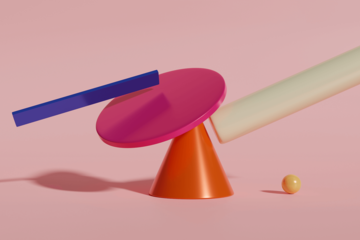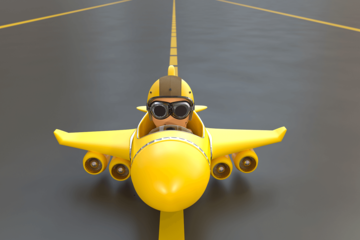Browse
Education
Important and easy ways of Conserve Water
Conserving water helps us by supplying more amount of water for longer usage. It has become necessary in all areas because these natural resources are reducing along with the increasing population and their usages.
There are several ways to conserve water. Here are some important and easy ways for the conservation of water
Keeping the tap closed when not in use.
Check for the openings or leaks in water distribution pipes.
Make sure to use collected rainwater for gardening or washing purpose.
Always have a measure of how many buckets of water is wasted in a day and try to reduce.
Do not run more water than necessary while washing and cleaning clothes, utensils, etc.
Do not prolong your bathing. Go for a quick shower rather than wasting buckets of water
Rainwater harvesting is one of the best method used for conserving water. There are different methods used to preserve rainwater instead of getting it wasted.
By:
rupali
Wednesday, Nov 10, 2021
AGRI-FOOD SYSTEMS
+1

Leave a comment
The atomic nature of the elements
Paralleling the development of the concept of elements was an understanding of the nature of matter. At various times in history, matter has been considered to be either continuous or discontinuous. Continuous matter is postulated to be homogeneous and divisible without limit, each part exhibiting identical properties regardless of size. This was essentially the point of view taken by Aristotle when he associated his elemental qualities with continuous matter. Discontinuous matter, on the other hand, is conceived of as particulate—that is, divisible only up to a point, the point at which certain basic units called atoms are reached. According to this concept, also known as the atomic hypothesis, subdivision of the basic unit (atom) could give rise only to particles with profoundly different properties.
By:
rupali
Tuesday, Jul 27, 2021
AGRI-FOOD SYSTEMS
+1
AGRI-FOOD SYSTEMS
+2
Monday, Jul 26, 2021

WATER, ENERGY, AND THE ENVIRONMENT
+2
Friday, Jul 23, 2021

Leave a comment
The solar system’s several billion comets are found mainly in two distinct reservoirs. The more-distant one, called the Oort cloud, is a spherical shell surrounding the solar system at a distance of approximately 50,000 astronomical units (AU)—more than 1,000 times the distance of Pluto’s orbit. The other reservoir, the Kuiper belt, is a thick disk-shaped zone whose main concentration extends 30–50 AU from the Sun, beyond the orbit of Neptune but including a portion of the orbit of Pluto. (One astronomical unit is the average distance from Earth to the Sun—about 150 million km [93 million miles].) Just as asteroids can be regarded as rocky debris left over from the formation of the inner planets, Pluto, its moon Charon, Eris, and the myriad other Kuiper belt objects can be seen as surviving representatives of the icy bodies that accreted to form the cores of Neptune and Uranus.
By:
rupali
Friday, Jul 23, 2021
YOUTH EMPOWERMENT
+1

Leave a comment
Sun, Moon, and brightest planets
The Sun, Moon, and brightest planets were visible to the naked eyes of ancient astronomers, and their observations and calculations of the movements of these bodies gave rise to the science of astronomy. Today the amount of information on the motions, properties, and compositions of the planets and smaller bodies has grown to immense proportions, and the range of observational instruments has extended far beyond the solar system to other galaxies and the edge of the known universe. Yet the solar system and its immediate outer boundary still represent the limit of our physical reach, and they remain the core of our theoretical understanding of the cosmos as well. Earth-launched space probes and landers have gathered data on planets, moons, asteroids, and other bodies, and this data has been added to the measurements collected with telescopes and other instruments from below and above Earth’s atmosphere and to the information extracted from meteorites and from Moon rocks returned by astronauts. All this information is scrutinized in attempts to understand in detail the origin and evolution of the solar system—a goal toward which astronomers continue to make great strides.
By:
rupali
Friday, Jul 23, 2021
WATER, ENERGY, AND THE ENVIRONMENT
+1

Leave a comment
Solar System
The Solar System is the gravitationally bound system of the Sun and the objects that orbit it, either directly or indirectly. Of the objects that orbit the Sun directly, the largest are the eight planets, with the remainder being smaller objects, the dwarf planets and small Solar System bodies. Of the objects that orbit the Sun indirectly—the natural satellites—two are larger than the smallest planet, Mercury.
One of Billions. Our solar system is made up of a star, eight planets and countless smaller bodies …
Meet Me in the Orion Arm. Our solar system orbits the center of the Milky Way Galaxy at about …
A Long Way Round. It takes our solar system about 230 million years to complete one orbit around …
Spiraling Through Space. There are three general kinds of galaxies: elliptical, spiral and irregular.
By:
rupali
Friday, Jul 23, 2021
CULTURE AND SOCIETY
+1
Leave a comment
A coordination compound is composed of one or more complex structural units, each of which has a central atom bound directly to a surrounding set of groups called ligands. The nomenclature of coordination compounds is based on these structural relationships.
By:
Edwin Castel
Wednesday, Jul 21, 2021
HEALTH AND NUTRITION
+1

Leave a comment
Cladodes (also called cladophylls or phylloclades) are shoot systems in which leaves do not develop; rather, the stems become flattened and assume the photosynthetic functions of the plant. In asparagus (Asparagus officinalis; Asparagaceae), the scales found on the asparagus spears are the true leaves. If the thick, fleshy asparagus spears continue to grow, flat, green, leaflike structures called cladodes develop in the axils of the scale leaves. The presence of cladodes in unrelated desert angiosperm families is an excellent example of convergent evolution, or the independent development of the same characteristic in unrelated taxa.
By:
rupali
Wednesday, Jul 21, 2021
YOUTH EMPOWERMENT
+1

HEALTH AND NUTRITION
+1
Wednesday, Jul 21, 2021




Leave a comment